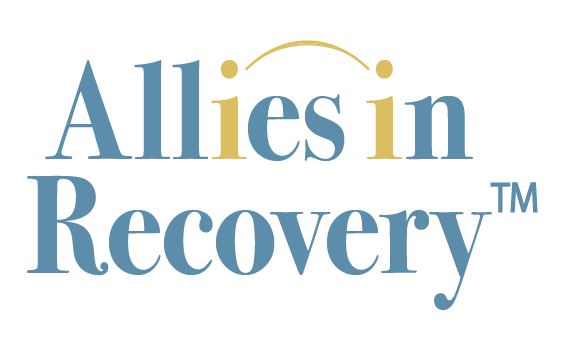How Exactly Does This Website Help Families?

‘My Learning Center‘ is our members-only eLearning feature, where families use Video Modules and Key Observation exercises to help them acquire the skills necessary for bringing change in their loved one’s behavior and ultimately leading them to treatment.
This post originally appeared on our Member Site blog, where experts respond to members’ questions and concerns. Take advantage of our current special offer today and get full access to Allies in Recovery’s eLearning program. Details here.
Q & A with Dominique Simon-Levine, founder and director of Allies in Recovery
Allies’ Content Editor, Isabel Cooney, had the following conversation with Dominique Simon-Levine. Dominique’s comments and explanations will help families understand what the Key Observations are, what they’re for, and why they are key.
IHC: What are the Key Observations?
DSL: The Key Observations are a series of 21 exercises which are found in the Learning Center of our member website. They are nestled in among the video modules.
IHC: Who are the exercises designed for?
DSL: All of this is for the family member. We’re educating the family member on improving their relationship with the loved one.
IHC: Are my answers to the Key Observations visible to other people on the site?
DSL: Not at all. The information you are gathering for the Key Observation exercises forms a private and secure folder. Only you can choose to share its contents.
IHC: What is the main idea behind these exercises?
DSL: The Key Observations help you begin to collect critical details about your relationship with your loved one. We want you to build awareness around these details, so you can start recognizing patterns that exist.
IHC: What if the situations with my loved one changes, or I want to add something to an exercise I’ve already completed?
DSL: Think of the Key Observations as a cross between a private journal and a blackboard. Anything you check off or write down remains there for you – and only you – to reread or come back to. Anything you erase disappears. You can modify or add to your answers at any time.
IHC: I already know my loved one like the back of my hand – almost better than I know myself. ‘Building awareness” seems a little unnecessary.
DSL: You bring up an excellent point. Yes! You do certainly know more about your loved one – and their substance use – than practically anyone else. And this is precisely why the Key Observations can be so powerful.
Our questions help you to gather details and observations about your loved one and your relationship with your loved one. Many of the questions may indeed be quite easy for you because of how intimately you know the situation. But the part that comes next, once you have collected so many pieces of the puzzle, is stepping back. So many family members are so deeply absorbed in navigating the ups and downs of daily life with an addicted loved one.
Through the Key Observations and other learning modules on our site, we want you to start connecting the dots. Recognizing patterns. Seeing where you fit in to those patterns. Reflecting on minor – or sometimes even major – modifications that you can make. The bigger picture of the puzzle will gradually come into focus.
IHC: What will actually change as I start recognizing patterns?
DSL: There are many ways you’ll start to put your new understanding to use. First, you’re much less likely to be caught unaware or to be thrown off when the pattern repeats. Second, you’ll start being able to respond in a calmer way. You’ll recognize the patterns for what they are and begin adopting more thoughtful ways to respond.
IHC: The Key Observations exercises will teach me all of those skills?
DSL: The Key Observations are one of the central components of the learning we propose. In fact, they go hand in hand with our 8 Video Modules. They include guidance on communications skills and safety precautions. We’ve tried to place these exercises just after the video modules they best correspond to, but you should feel free to jump back and forth.
IHC: You talk about jumping back and forth between the Key Observations and the Video Modules. So there’s no particular order I need to follow?
DSL: Technically speaking, you can start wherever you want and go in any order you want. However, we strongly recommend that everyone begin with the modules regarding your personal safety. Begin with the Introductory Module (1) and the Safety Module (2), (view an excerpt here). If you are in danger, or in a constant state of fear for yourself or others, you will struggle with this work. These issues need to be addressed first, before moving on to learning the CRAFT approach.
IHC: So what comes after Key Observations 1 and 2?
DSL: We then move on, in Key Observations 3–13, to some of the critical information you’re going to want to know about your loved one. It’s what we call their ABC’s.
IHC: What does ABC’s mean?
DSL: ABC stands for:
A – Antecedents – what happens before your loved one uses?
B – Behaviors – what happens while they’re using?
C – Consequences – what happens after they use?
Filling out the exercises dealing with the ABC’s (3 – 13) is a really great start. From there, as with the other learning modules, go to what you need. Each exercise helps you look at one aspect, one slice of things. By putting your attention on it, you will improve it.
IHC: Could you talk about a real-life example of how the principles of CRAFT, and the Key Observations, helped someone to improve their situation?
DSL: Sure. Key Observations 10 and 11 talk about the consequences of your loved one’s use. One Allies in Recovery client started to bring her focus to her husband’s drinking. As she answered questions about what kind of consequences he experienced from his drinking, his wife first realized that he didn’t experience any negative consequences.
Part of this had to do with the very controlled manner in which he drank. He avoided drinking when family was over. He had already retired so messing up at work wasn’t an option. And he did a lot of biking, so he was in quite good physical shape.
But upon further reflection, our client began to make connections to her own behavior. In fact, she was so ashamed about his drinking and embarassed when he did actually trip up, that she would rush to “cover it up.” By going to great lengths to give the appearance that everything was fine, she was actually standing in the way of change. How could her loved one get a reality check about his drinking, if she was hovering about with her broom, sweeping up evidence of the problem as soon as it appeared?
CRAFT helped our client to realize that she had important changes to make to help her loved one. She could work on these feelings of shame and embarassment, which can truly be destructive. And by stepping back and loosening her grip, she could allow her husband to stumble. The natural consequences of our actions can seem negative at first but they are also opportunities to get honest and look at the choices we are making.
IHC: One last question. How long will it take me to finish filling out all 21 Key Observations?
DSL: Each exercise is designed to take one to two minutes. We refer to each exercise in the Video Modules, so if you’re filling them out alongside the videos, you should have a complete set of Key Observations when you’re done watching, over a six-to-eight week period. You’ll have a clear idea of what is happening with your loved one with regards to their alcohol or drug use, the key facts about your interactions, and the script you would use when talking to your loved one about treatment.
Yes, the family DOES have a role to play. Your stance, behavior, and choices DO make a difference. “Tough love” is not a successful technique. Our learning platform is set up to help family members learn the techniques that will reduce conflict, build that bridge of trust and communication, and be effective in guiding your loved one into treatment. Together we will move your loved one towards recovery. Learn more here.
